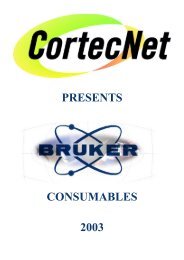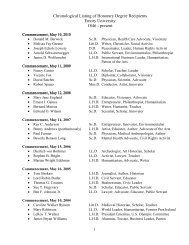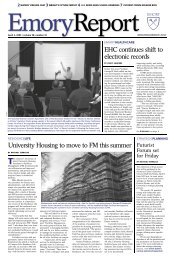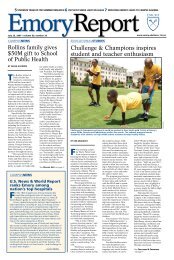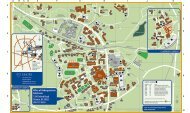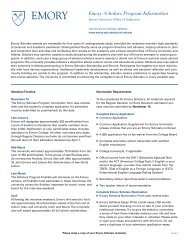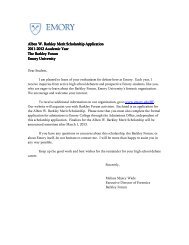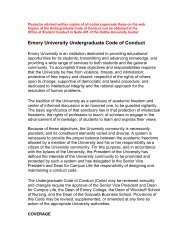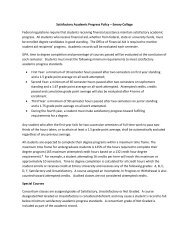DOSY Experiments - Emory University
DOSY Experiments - Emory University
DOSY Experiments - Emory University
You also want an ePaper? Increase the reach of your titles
YUMPU automatically turns print PDFs into web optimized ePapers that Google loves.
Chapter 3 Gradient Calibration and Correction for<br />
Gradient Non-Uniformity<br />
3.1 Introduction<br />
As described in section 2.1, the measurement of good quality <strong>DOSY</strong> data is highly dependent on<br />
the careful optimization of experimental parameters and the reduction, or complete elimination,<br />
where possible, of sources of systematic errors in the data. However, even when all possible<br />
steps have been taken to maximize spectral data quality, some systematic sources of error will<br />
remain that can degrade the quality of the final <strong>DOSY</strong> spectrum and reduce the accuracy of the<br />
diffusion measurements. Among these remaining sources of systematic error, one of the most<br />
significant is spatial non-uniformity of the field gradient pulses produced by the probe.<br />
As described in section 2.1, diffusion measurements by NMR involve the fitting of the signal<br />
amplitude as a function of the square of the gradient pulse area to the Stejskal-Tanner equation:<br />
2<br />
S( G)<br />
=<br />
S(<br />
0)<br />
exp( −Diγ<br />
δ G<br />
[1]<br />
where S(G) and S(0) are the signal intensities obtained with gradients strengths of G and 0,<br />
respectively, D is the diffusion coefficient, γ is the gyromagnetic ratio, δ is the gradient pulse<br />
duration and Δ is the effective diffusion delay.<br />
Unfortunately, largely due to necessary compromises made in all probe designs, the field<br />
gradients produced are not perfectly uniform over the active volume of the sample. In diffusion<br />
experiments this leads to problems with gradient calibration and to signal decays whose form<br />
deviates slightly from that of the Stejskal-Tanner (S-T) equation. Fitting such data to the S-T<br />
equation without correcting for non-uniform gradients has some undesirable consequences: first,<br />
with increasing diffusion weighting, the deviation of the signal decay from the S-T equation also<br />
increases. This means that the apparent diffusion coefficient calculated from the fit depends on<br />
the level of diffusion weighting used. Second, the standard deviation of D estimated in the fitting<br />
process is increased because the experimental and theoretical decays do not match, a problem<br />
that gets worse as the diffusion weighting increases. Since the standard error is used to define<br />
the width of a peak in the diffusion domain of a <strong>DOSY</strong> spectrum, (see section 4.5) any increase in<br />
the standard error leads to a loss of diffusion resolution.<br />
Fortunately, it is straightforward to correct for almost all of these effects of gradient non-uniformity<br />
by fitting the experimental data to a modified Stejskal-Tanner equation that takes into account the<br />
actual gradient shape produced by the probe. A single experiment is used to determine the<br />
necessary correction to the S-T equation, which can then be used in the processing of all <strong>DOSY</strong><br />
data. The steps involved in correcting for gradient non-uniformity can be summarized as follows:<br />
Mapping of the gradient shape<br />
Calculation of the actual signal decay under this gradient shape<br />
Parameterization of the experimental signal decay<br />
Each of these steps is described in the sections below.<br />
12<br />
2 2Δ<br />
)




